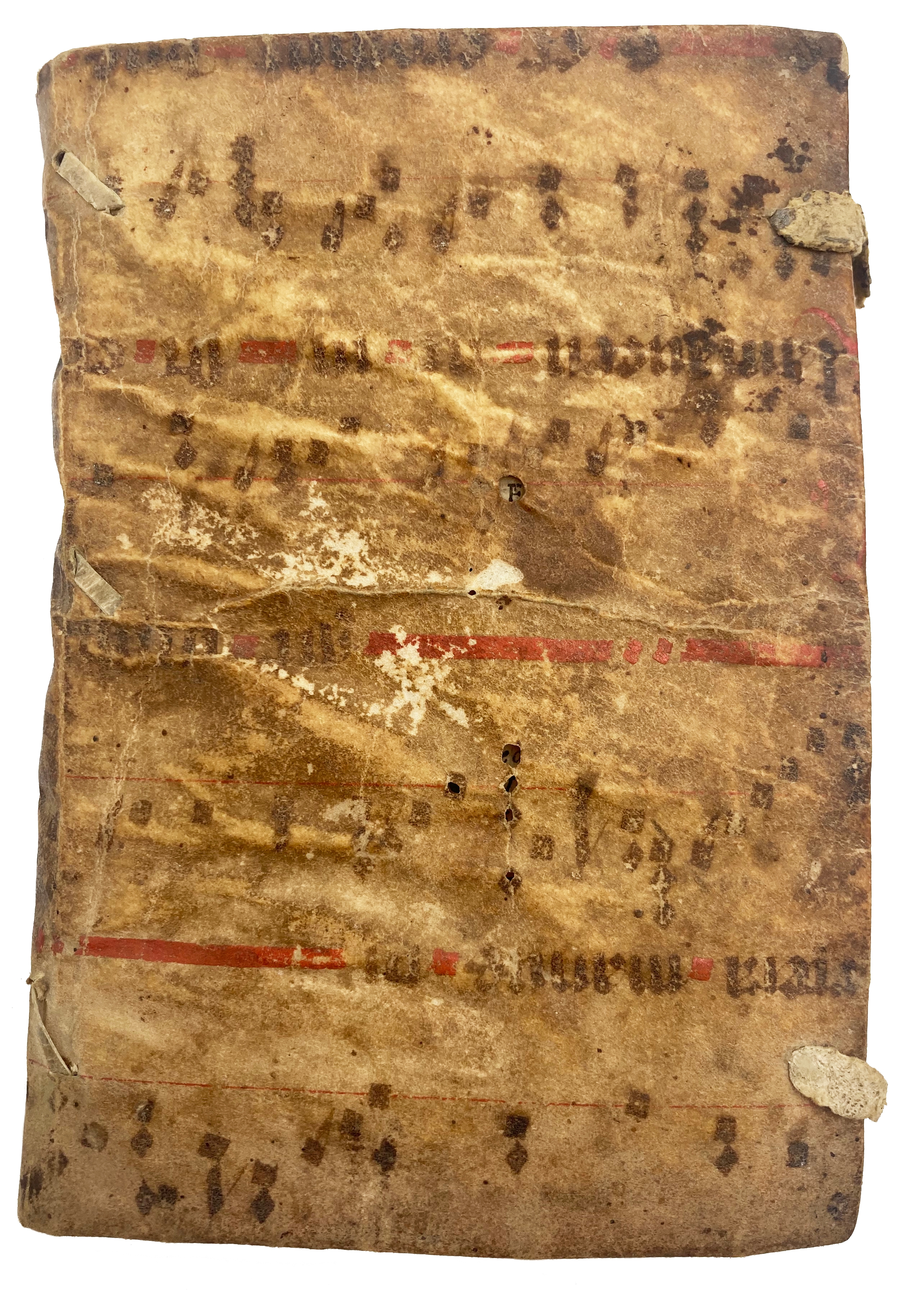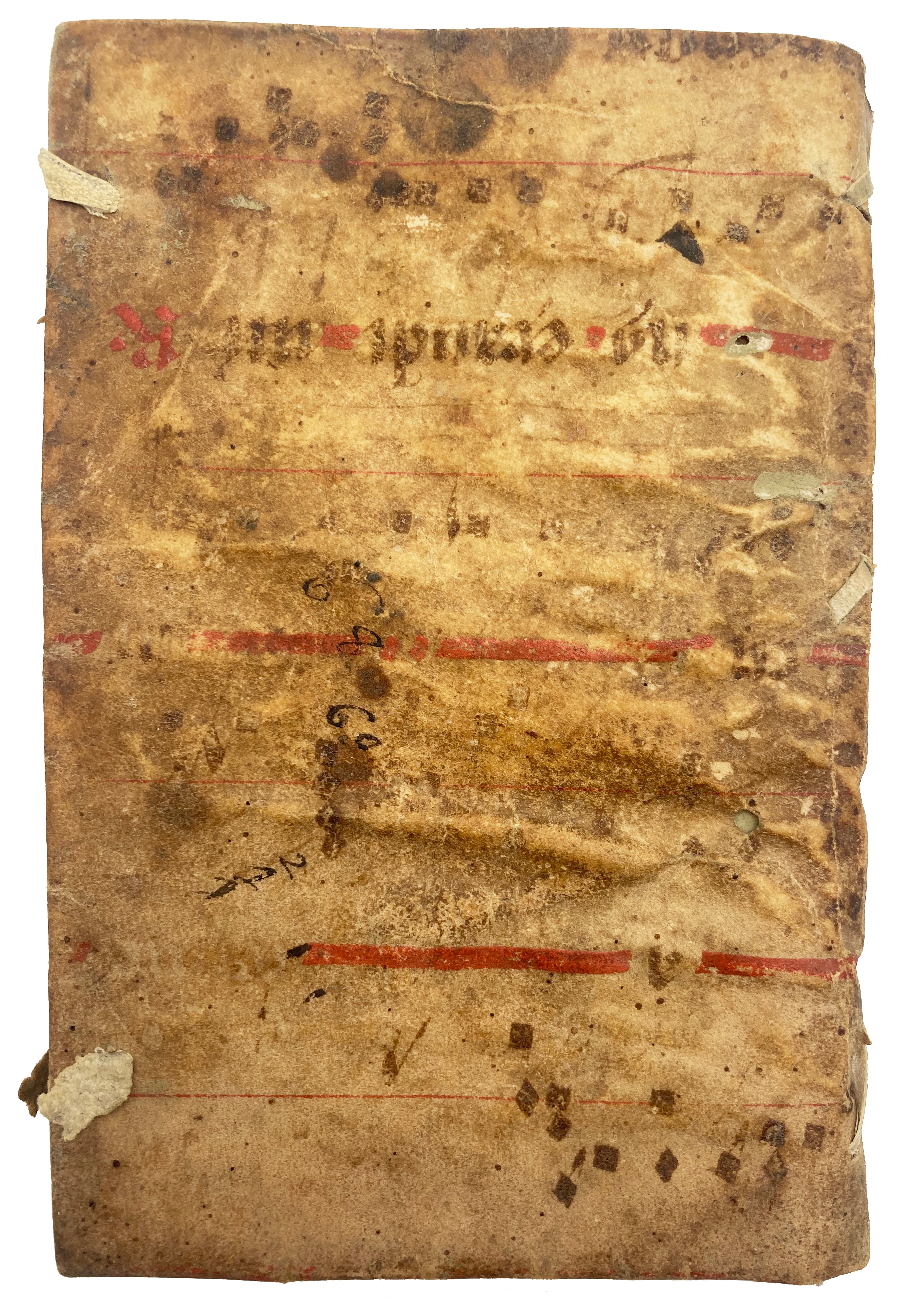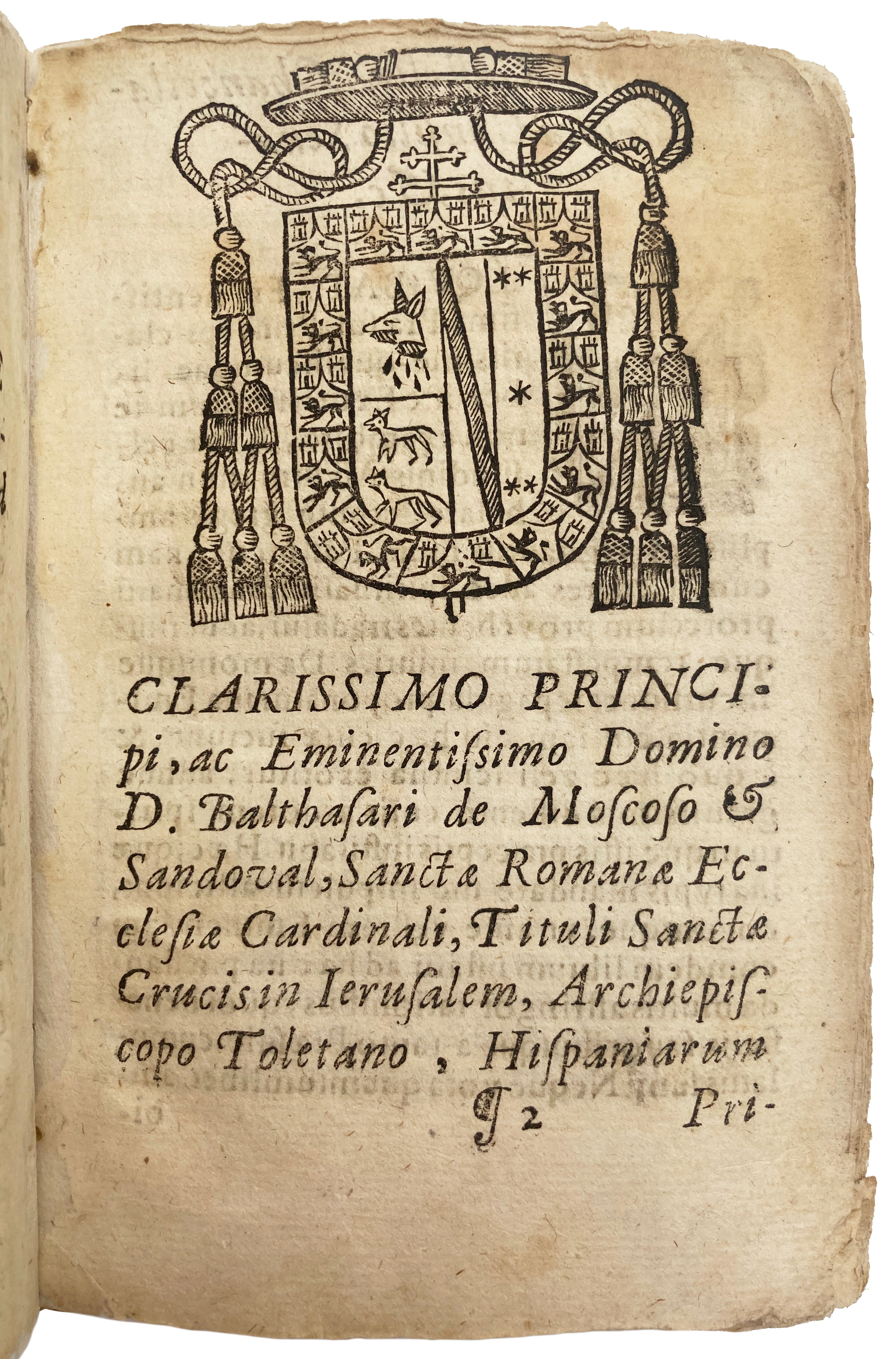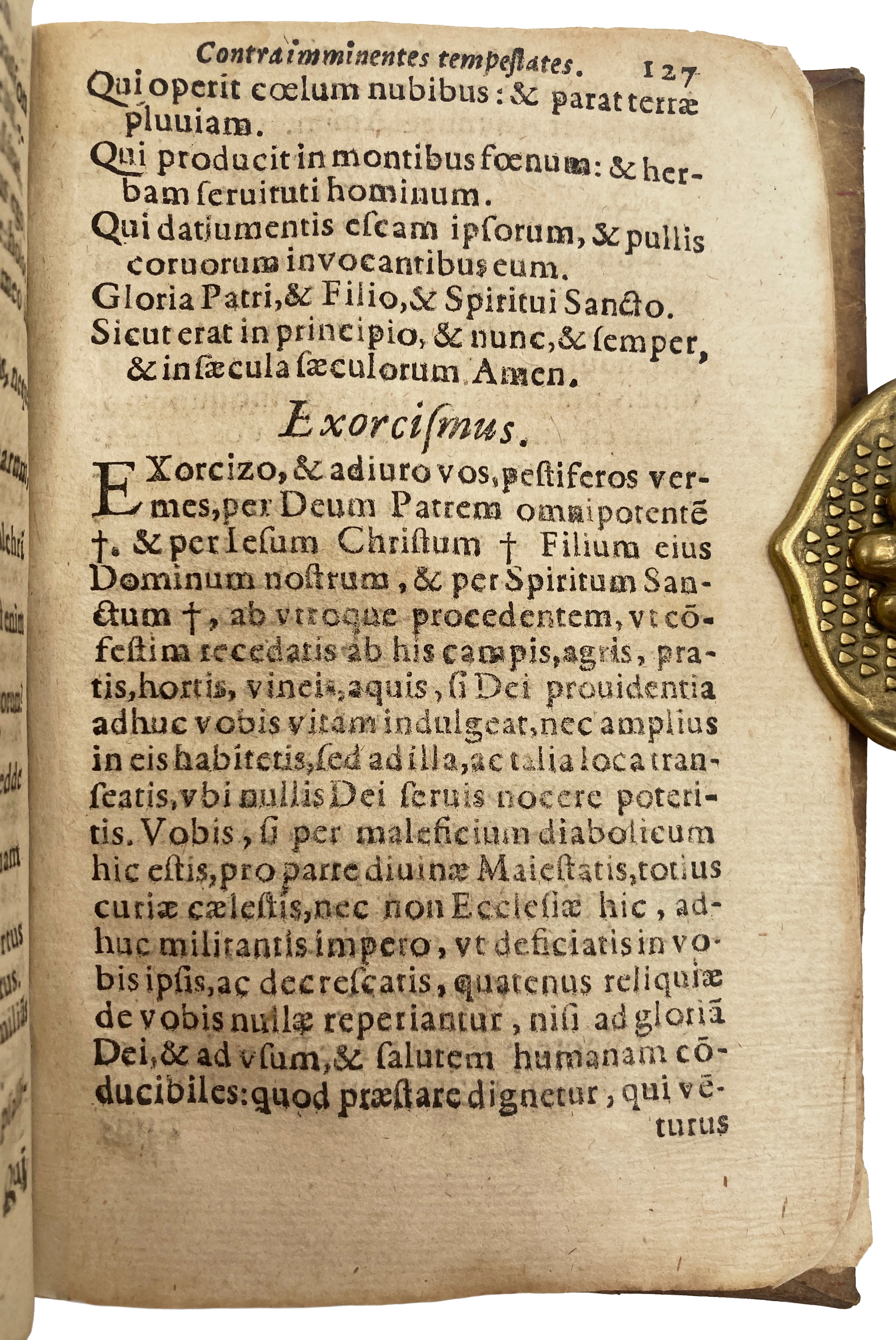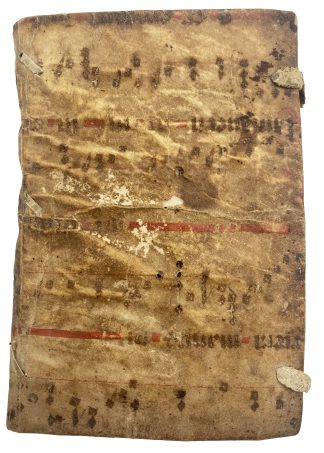JIMENEZ DE ARELLANO, Pedro.
NO COPIES IN US
Manuale exorcismorum.
Madrid, por Mateo Fernandez, [1659?].£4,850.00
FIRST EDITION. 8vo. pp.[16], 111 [i.e., 211], [5]. Roman letter, little Italic. Woodcut arms of bishop Baltasar de Moscoso y Sandoval to [par]2, decorated ornaments. Edges of first and last couple of ll., and outer upper corner, a bit frayed, slight age browning, small tear to lower edge of A3. A good and most evocative copy in its first binding of a C15 rubricated ms leaf, musical notation in black and red, from perhaps a breviary, traces of ties, eps from contemporary ed. of the Divine Office (printer’s waste), couple of small wormholes to covers, binding expertly secured.
The first edition of this very scarce, pocket-size vademecum for exorcists, in its original ms binding. All we know about Pedro Jimenez (or Ximenez) de Arellano survives on this titlepage, which states he was a lawyer of the Royal Senate, previously a priest. ‘Manuale’ begins by examining the requisites of a good exorcist – strong faith, true humility, virtues – and how he should prepare before an exorcism, e.g., that he should dress in a certain manner, bring a crucifix, have candles lit, and recite specific prayers. There follow sections with instructions for exorcism in connection with specific issues – e.g., tempests, thunder, lightning, and hail, as well as other calamities and great misfortunes; using litanies of the Virgin Mary, invocation of the saints, or the mysteries of the Holy Trinity; against poisonous or possessed animals or pests (e.g., snakes, caterpillars, mice and rats, locusts); infected water; the plague and fevers; haunted houses, and so on. It also features blessings such as of candles, incense, branches, herbs (on St John’s and St Laurence’s days), and litanies designed to work in variety of circumstances. Each section explains all the gestures the exorcist or priest should make, and all the orations, conjurations, and prayers he should recite. This manual is a most interesting instance of the way Counter-Reformation techniques were used to maintain control over popular rituals – e.g., in case of severe weather, illness, dangerous circumstances or inexplicable events – substituting the prayers of the Holy Church to those of the folkloric tradition. A scarce and very interesting work.
Two issues of this ed. are recorded, priority not established. The first (e.g., this one and BNE) with 8 ll. of preliminaries, and the woodcut arms of the bishop Baltasar de Moscoso y Sandoval (mentioned in the title); the second with 12 ll. and the arms of the Marquis de Lapilla. As Lapilla shared one of his shields with bishop Baltasar, they were probably related and Lapilla became the new dedicatee at some point, for reasons unknown.
No copies apparently recorded outside Spain. USTC 5072716; Iberian Books 110320. Not in Thorndike, Caillet or Grasse, Bibliotheca magica et pneumatica.

